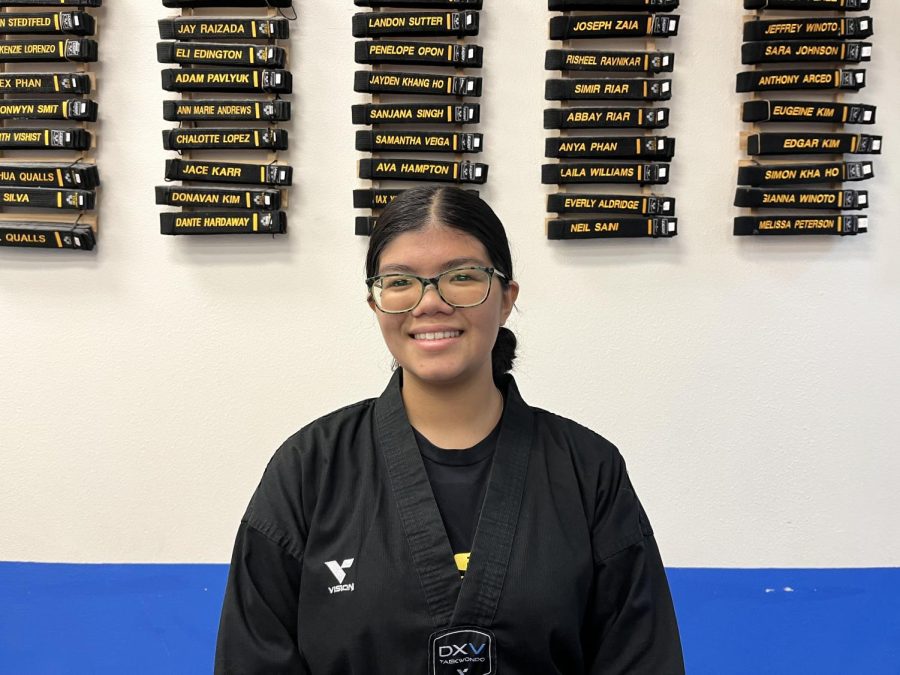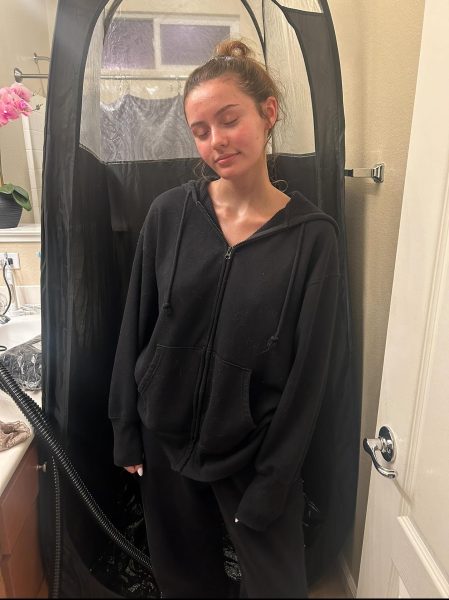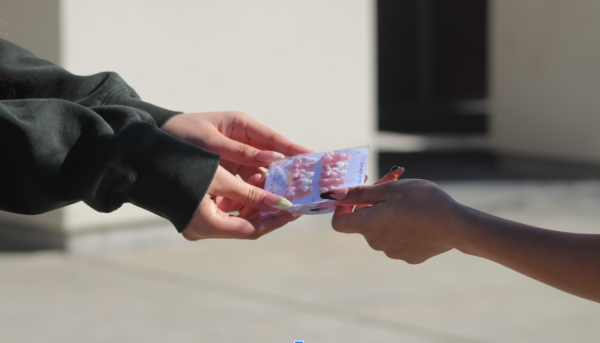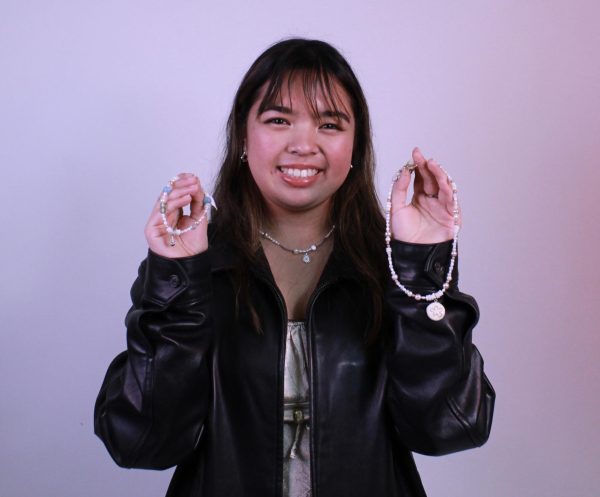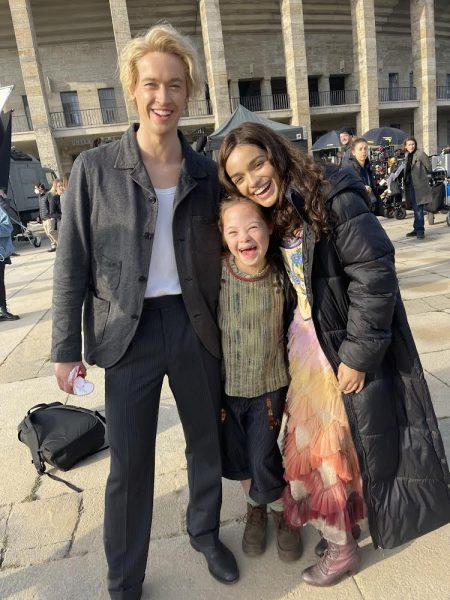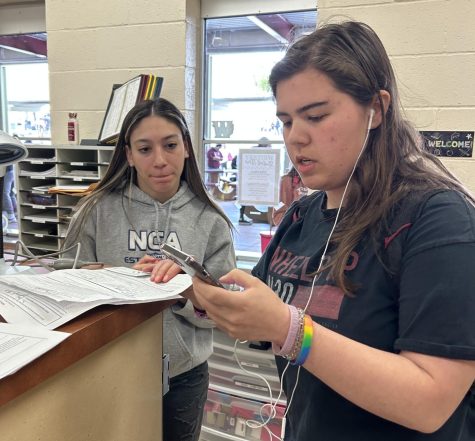Q&A with Samantha Veiga: What is your personal taekwondo experience?
Samantha Veiga stands in front of a wall that represents the Black Belt Club, which is located at her studio, Legend Martial Arts. Photo by Rachel Bustos
One of Samantha Veiga’s extracurricular activities outside of school is taekwondo. It all started when she was around 13 years old and chose to pursue martial arts. She practices every Monday and Friday at Legend Martial Arts. She is currently a blue belt and is striving towards the renowned black belt.
Q: What exactly is taekwondo?
A: Taekwondo is a type of mixed martial arts that originated from Korea. It puts emphasis on your lower body and legs and is mostly about forms, sparring and multiple ways to defend yourself.
Q: Why did you decide to join taekwondo?
A: I decided to join taekwondo to primarily learn how to defend myself and make many friends.
Q: How many years have you been doing taekwondo?
A: I have been doing taekwondo for about one and a half years.
Q: What in taekwondo do you enjoy the most?
A: I enjoy learning new forms for the most part. There are eight main forms that you need to know by the time you are a black belt. So far I only know four of those forms. Other than that, I enjoy doing kicks such as axe kicks, low high round kicks and double round kicks.
Q: What do you find the most challenging in taekwondo?
A: The most challenging part of taekwondo is probably performing at competitions. They can be very nerve racking and you need to put in tons of hours practicing for them. You are required to do it for at least six years in order to become a black belt.
Q: What are your competitions like?
A: I’ve only been to one competition so far, but what we do is present our best form to the judges. As we present, three judges grade you. One focuses on the technique of your stance, another focuses on technique of your hand motion, and lastly your overall grace and skill. It also took a lot of time and waiting because there were over 3,000 people from around the US to compete. It was arranged in different sections for each colored belt and age group. I was a green belt at the time, but went as a yellow belt so that I could compete more easily. When the competition ended, it felt like the best feeling in the world.
Q: What are the benefits of being a part of taekwondo?
A: One benefit of being a part of taekwondo is improving your acrobatic ability. You learn how to do front flips, handsprings, round offs, backflips and a bunch more stuff that I can’t even do yet. Acrobatics can also improve your flexibility.
Q: How do you start off your taekwondo routine?
A: At the beginning of every class we do jumping jacks, squats, push-ups, sit-ups and practice some basic kicks and blocks to warm our bodies up. Warming up our bodies is very important so that we won’t pull a muscle or get hurt from training. After that, we get on to the current lesson our instructor prepared us for the day.
Q: Do you plan to continue taekwondo after you graduate high school?
A: Most likely. Once I become a black belt I’ll definitely still continue to do taekwondo at my studio so that I won’t forget what I’ve learned.
Q: What are some tips for those who are starting taekwondo?
A: If you are just starting taekwondo you should focus and listen to the teacher the best you can. Practicing at home is also a big help. I like to get together with friends and go over stuff that we had trouble on or want to practice together.
Q: Would you recommend taekwondo to people and why?
A: Yes, I would definitely recommend taekwondo to people because it’s a good way to learn how to defend yourself. At my studio, it is not just about self defense and all the tough stuff. Our instructor makes each lesson fun for us. You also get to meet all kinds of new people and learn taekwondo side-by-side with them.
By RACHEL BUSTOS

